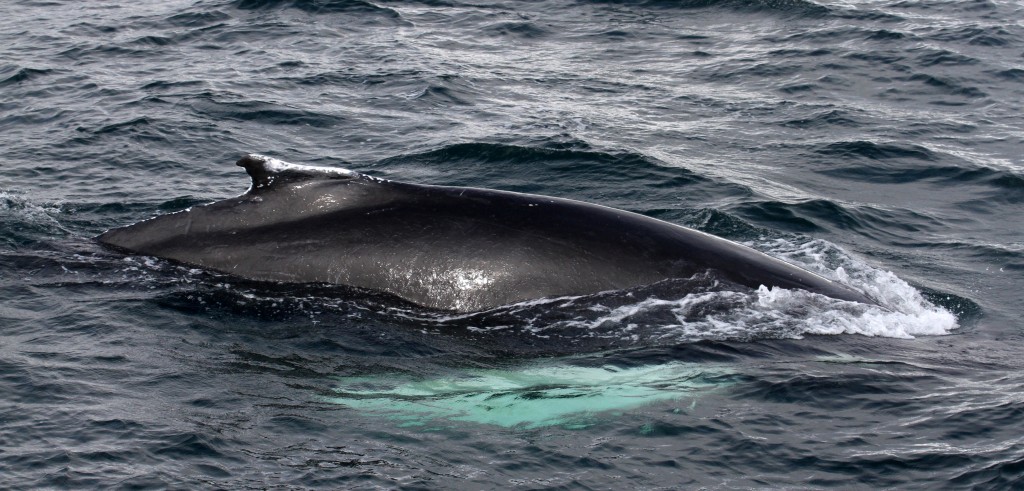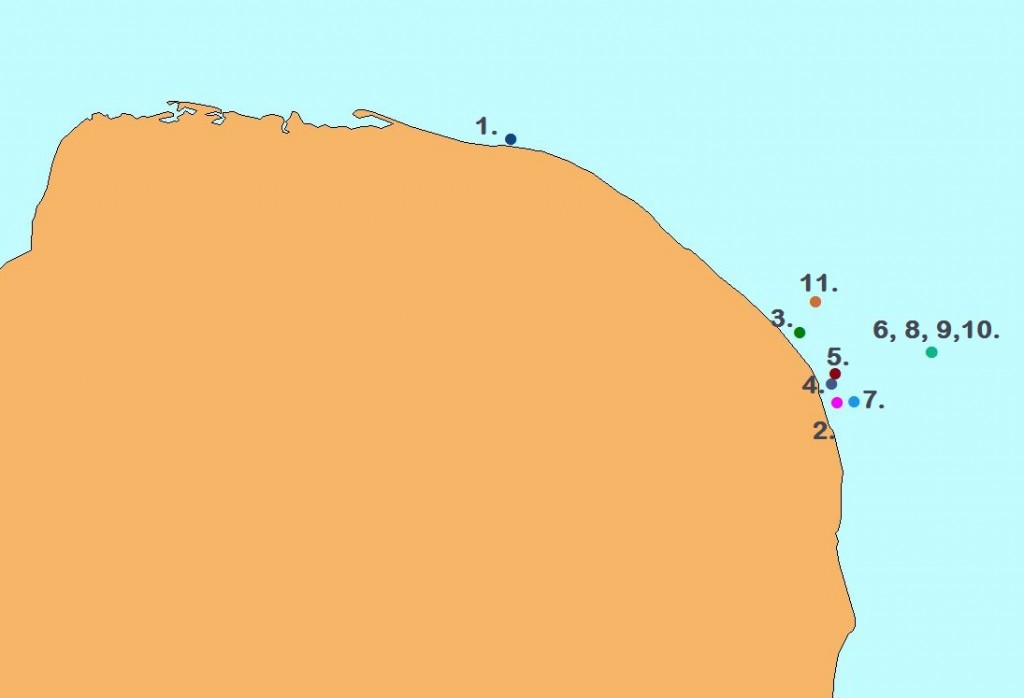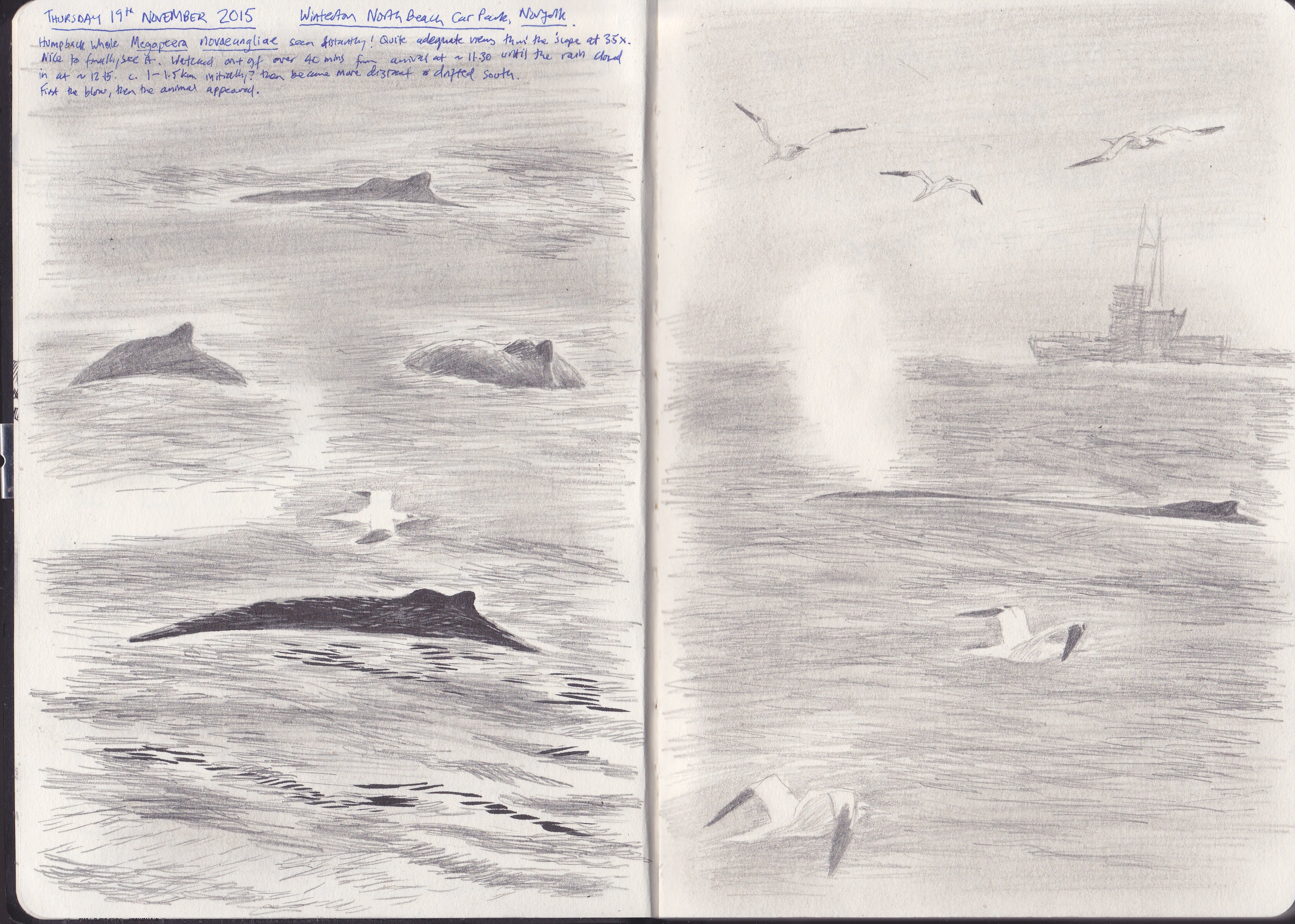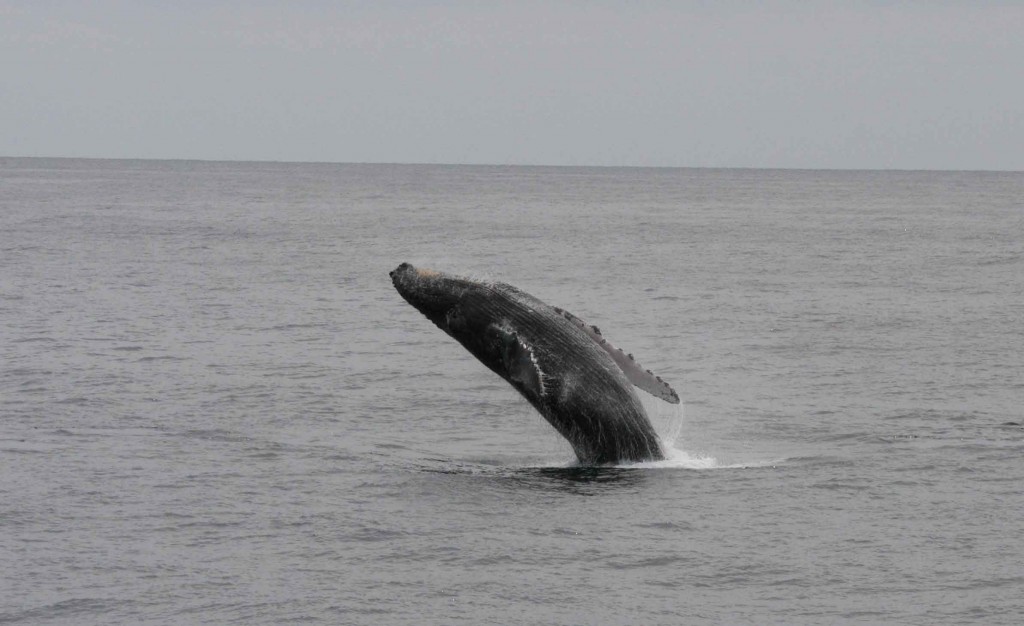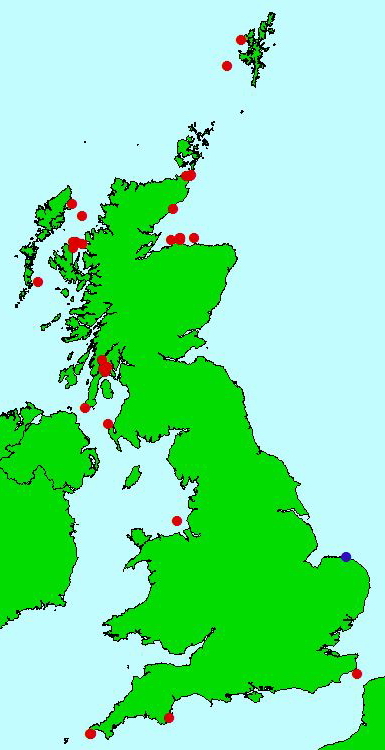Humpback whale showing characteristic humped back and white pectoral fins. Photo by Peter Evans/Sea Watch Foundation
Just a couple of weeks ago, with help from our Regional Coordinator for Norfolk we sent out a prediction to press in the East Anglia region of a humpback whale visiting Norfolk and Suffolk this autumn/winter time. Lo and behold, over the past week and a half we’ve had four humpback whale sightings off the Norfolk coast as well as minke whales spotted too!
Check out the infographic below to see when and where humpbacks have been reported **UPDATED 25/11/2015** and read below for the initial press release with more info on humpback whale sightings around Great Britain this year so far!
Showing the recent humpback whale sightings off Norfolk (Nov 2015). Keep an eye on our recent sightings page for the most up-to-date info!
1. Probable humpback reported off Sheringham 07/11/15 2. Off Hemsby 09/11/15
3. Off Horsey Gap 14/11/15 4. Off Winterton 18/11/15 5. Off Winterton 19/11/15
6. Off Winterton 20/11/15 7. Off Hemsby 21/11/15 8. Off Winterton 21/11/15
9. Off Winterton 22/11/15 10. Off Winterton 23/11/15 11. Off Waxham 23/11/15
We also received this wonderful sketch of the sighting from Richard Thewlis (please click to enlarge)….
Richard said “The whale was seen on off for 45 mins or so until we left at 12.15 due to heavy rain setting in. Easiest way to track it was to keep scanning the water below a loose flock of Gannets that were present offshore. I estimate the animal was c. 1.5km away initially and then moved to 2 km, and drifted south. About 20 or so other observers saw the whale also”
Photographs of the animal can be seen here and here. There have also been reports of a humpback off North Yorkshire in recent days as well as two seen feeding around the Shetland Isles.
Having a whale of a time off Norfolk & Suffolk!
With 2015 being an unprecedented year for sightings of the magnificent humpback whale around the British Isles, wildlife enthusiasts are urged to head to the Norfolk and Suffolk coasts this month and next to spot one for themselves!
“There’s always a huge amount of uncertainty with wildlife-watching, but recent trends would suggest that spotting a humpback whale off the Suffolk or Norfolk coast this autumn/winter is a real possibility” says Kathy James, Sightings Officer for Sea Watch Foundation.
Scientists are predicting that a humpback whale like this may be seen off East Anglia this autumn. Photo by Peter Evans/ Sea Watch Foundation.
Sea Watch is a national foundation dedicated to the research and conservation of whales, dolphins and porpoises around the British Isles. Over the past two years the charity has received records of humpback whales spotted from the Suffolk and Norfolk coasts, and the scientists hope that this winter will be no different.
Humpback whales are uncommon in British waters, but occasionally and increasingly are being encountered in various parts of the UK as well as off the south
and west coasts of Ireland, particularly in summer. Every year some undertake a long migration between winter breeding grounds off the coasts of Africa and feeding grounds in the North-east Atlantic, mainly around Iceland. For half a century, the species was extremely rare in British waters after a long history of over-exploitation. However, since the 1980’s the species has been recorded regularly from Shetland, NE mainland Scotland, the northern Irish Sea, and the Western Approaches to the Channel. In the last few years, however, sightings have started to appear in the southern North Sea off East Anglia, Kent, and the Belgian and Dutch coasts.
This year so far, humpbacks have been sighted off Shetland, Grampian Region, Cornwall, the English Channel, Liverpool Bay and the north and west coasts of Scotland. Closer to home, there was also an unconfirmed report of a humpback off Kelling Hard in Norfolk on April 12th. Sadly one humpback died after becoming entangled in fish creel ropes near the village of Helmsdale (Scotland) in June of this year.
Map to show sightings of humpback whales around the British Isles in 2015. Blue indicates unconfirmed sighting off Kelling Hard in April.
Carl Chapman, Regional Coordinator for Sea Watch Foundation, hopes that other large whales may be seen this autumn too. “The ‘big whale’ season here starts roughly the 20th October and lasts through to mid-November as the animals come down from Scotland, Yorkshire and maybe across from Holland following the herring. The fish then disperse off Great Yarmouth. This mimics the tracks of the herring drifters that operated in the past out of the port there” says local wildlife expert Carl.
And it’s not just humpback whales that folks will see from the coast of East Anglia. There are harbour porpoise a plenty, and occasional minke whales to be seen – unfortunately, one has already been washed up dead this last week – and one could possibly observe pilot whales not to mention dolphin species such as the white-beaked dolphin.
An example of humpback tail fluke used for identification purposes. Photo by S Round / Sea Watch Foundation.
Scientists are able to identify individual humpbacks by patterns on their tail flukes. Using photographs from the sightings, Sea Watch Foundation can see if the animals have been recorded before by attempting to match them to the national catalogue that they hold. This information helps to determine information such as how the animals use particular habitats, their range, and life processes.
If you are lucky enough to spot one of these giant tail flukes, or even the tiny dorsal fin of a harbour porpoise, please let the scientists at Sea Watch Foundation know. Sightings of whales, dolphins and porpoises can easily be submitted online at www.seawatchfoundation.org.uk/sightingsform/. If you would like to become involved in actively watching for whales locally, then please contact Sea Watch Regional Coordinator, Carl, on carl@wildlifetoursandeducation.co.uk.

